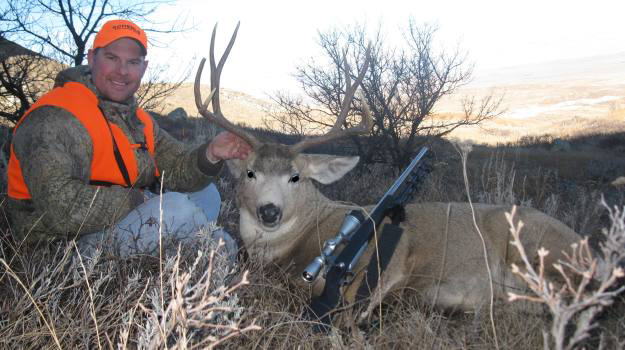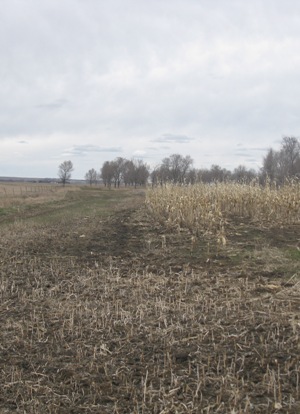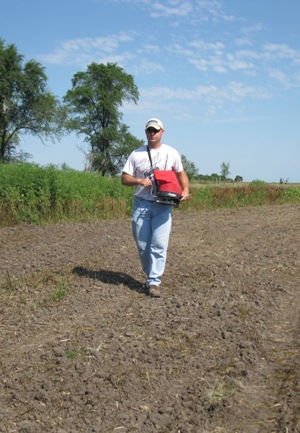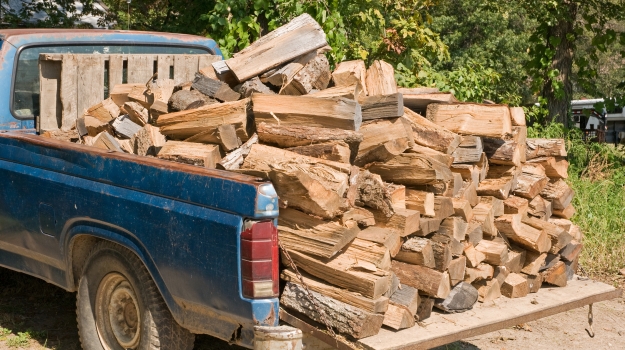
Constructing a Stable Foundation is Key to Realizing Management Goals
By Dana R. Rogers
When I was a teenager, I read everything I could find regarding whitetail behavior, tactics and strategies, anything for improving my odds of success. Even as a young man I had been fortunate enough to take several young bucks and several does. Later on, in my 20s, I wanted a greater challenge and a better quality hunting experience, I wanted to hunt mature bucks. Growing up on a farm and ranch, I was blessed to have private land to hunt. Like most farmers and ranchers in our area of the Dakotas, my father and uncle were raised conducting deer drives with several of our friends and neighbors in addition to our immediate family. This type of hunting has been entrenched in the culture throughout much of the Dakotas. After several years this style of hunting had become something I wasn’t really fond of any longer so I turned my attention to “bowhunting” and hunting in states where bucks had an opportunity to grow older. For over a decade I’d actually stopped returning home to the Dakotas to hunt, the style and overall experience just wasn’t my “cup of tea.” If you want your circumstances to change, YOU must change! Or put another way, if you want extreme results, you must make extreme changes.
After several years my family and I moved “back home” and the opportunity to actually manage part of my family farm and ranch presented itself. For years I’d dreamt of this opportunity and I knew exactly what I needed to do. If mature bucks are what you’re after and you’re tired of coming up short, you can either accept it or do something about it. I proposed to do something about it! You have to find a better spot to hunt or make the spot you have better… simple as that. You too, can take control of your hunting future by turning your hunting property into a “whitetail Mecca."
The first thing we did was create a long term plan for success. What are your goals and are they realistic and attainable? By taking an inventory of your “assets” you can create a blueprint for improving your whitetail hunting future. Simply put, figure out where you are, where you want to be and how you’re going to get there.
Through management, harvest control and food plots you can turn your hunting property into one that you used to dream of. Now that I’ve completed six years of my management plan I’ve learned a LOT about what it takes to be successful. I’ve also learned about many of the pitfalls in a property management effort hidden by Mother Nature and some that have been self inflicted.
 The Land (The Body)
The Land (The Body)
Whether you own, lease or simply have a group of hunting friends who have permission on a particular property, you can make your spot better through hard work and discipline. The land, and control over it, will have the largest impact on how far you can take your objectives. Obviously, if you own the land and it’s a sizeable enough tract with enough food, water, cover and shelter, it will make it significantly easier to ‘”control” most aspects of the process. In my case, I’m blessed that the land is owned by my immediate family. To control the process and to make it financially amenable, I entered into a lease agreement. Buying hunting or recreational property has become a very popular choice over the past decade or two. It’s really the only way to know for sure that your efforts will be there for you to enjoy once you’ve invested your time, sweat and money.
If you have the opportunity to lock up a property through a lease, I’d suggest making sure it’s a long term contract. I would suggest a minimum of five years, but ten would be better if you can come to an agreement. The last thing you want is to wait 3-4 years for your age structure to get where it needs to be, kill one good buck at the end of the lease and then lose it because other people outbid you now that you’ve done the work to make the property great. (Editor’s note: Pay heed! This point is very true. I know several people this has happened to. No matter how nice you believe people to be, dollar signs can make some do unethical things).
If owning or leasing land isn’t an option for personal or financial reasons, then perhaps forming a cooperative with your hunting group and landowners is the answer. I tried for years to “teach” people about alternatives to killing young bucks or explaining why certain methods of hunting were actually counterproductive to certain goals. If you aren’t all on the same page you’ll be beating your heads against the wall. Everyone likes to see big bucks. Most farmers and ranchers have a need to have some deer removed so the damage to crops or loss of cattle feed is reduced to a tolerable level. By coming together and explaining the benefits of a balanced herd and an overall improved age structure, it can be a win / win situation. One word of caution, the landowner is the one who pays for the place. He’s the final decision maker and really the only one who ultimately counts.
If you to enter into purchasing a property with another, find a lease, or create a group cooperative, I’ve found the biggest sticking point success and achieving “your goals” is making sure everyone involved has “common goals.” If you aren’t of “like-mind,” you may have problems achieving anything. “trigger-finger management” is easy if you can show a bit of restraint - shoot enough does to keep balances in perspective and don’t shoot a buck until he’s at your preferred maturity. Dealing with the people who hunt with you, or near you, can be a “sticky issue.”
Harvest Control (The Mind)
The most obvious piece of the puzzle can’t be stressed enough. You can’t hunt what’s not there. If your goal is to produce 3year old bucks and have a tight sex ratio so that you can see a lot of great rutting activity, all you really need to do is get all year-old bucks and as many 2year-old bucks as possible to maturity.
Using a camera survey each fall will be instrumental in this. By counting your buck to doe ratio and setting your doe harvest goals based upon a 1 to 1 ratio you can effectively set the harvest objectives for each season. The key to enabling those bucks to reach whatever age you desire is providing them a sanctuary to hide from other hunters who aren’t quite as selective. I looked over aerial photos of the property and selected a sizeable piece of thick cover in the center of the property that is never entered unless I’m trailing a deer or shed hunting. When we started we had one buck on camera that appeared to be three. For the first three years, we let ALL bucks live and shot only does. To achieve the desired goals we had to think long term. You need to change your mind-set. We want the “vision” to think about what a buck can become given two or three more years to live.” Rather than, “I’ve got to shoot a buck…any buck.”
I always hunt with an outside-in approach. Meaning we use low pressure observation tactics to ensure we don’t spook animals off of the property, while still giving us an opportunity to hunt and harvest our target animals. In our open country, using good optics from a half mile or more away is ideal. I also employ observation stand/blind hunting strategies and always play the wind. A wise old buck will know when pressure is being put on. If you bust him out of your hunting area, if there is a safer, more secure hiding spot, he’ll head for that location.
We’ve grown our program to the point where we strive to harvest only the oldest bucks available. “Extremely selective harvest,” or “trophy deer management,” is possible under ideal circumstances, but you have to understand the tradeoffs. If you want to shoot a good buck every year with the outside chance of a fully mature buck, I’d suggest targeting three year-olds as your goal. If you don’t mind not killing a buck for a few years or want to take it to the extreme of trophy management you’ll have to accept those losses. Of course this all depends on how many people hunt in your group and what would make them happy. It may be possible for a property to produce five or six 3 year-olds each year, or if you have enough restraint, perhaps you can achieve the loftier goal of producing two 5 year-old bucks each season.
Bucks have a much higher mortality rate than does. This past year alone I found 4 yearling bucks that died for no identifiable reason. My records show that I’ve found between 2-4 yearling bucks each spring that met a non-hunting demise each of the past six years. A biologist I queried on this indicated that young bucks are not as equipped to handle the rigors of the rut and harsh northern winters due to their lack of body mass. So in addition to vehicle collisions and the rigors of the rut, bad winters in the north take a percentage of deer each year.
Another loss you have to expect is from hunting pressure on neighboring properties. Deer are wild animals and go where they please. You might pass a 3or even 4 year-old buck go, but will your neighbor?
Then there’s the issue of poaching and illegal harvest. Your management practices WILL attract unwanted attention eventually. You have to be vigilant against poaching and trespassing, by that certain segment of the population who has no respect for wildlife laws and personal property rights.
Through the use of trail cameras, clearly marking property boundaries with signs and patrolling your property against the theft of hunting opportunities, you can help reduce that chance.
There are only going to be so many deer your hunting property can hold. By getting a good herd census of your area, you can get a good feel for what numbers you have and what age class of bucks live in the immediate area. Learning how to age bucks on the hoof is critical. With a little practice you can catalog them into groups. I start by categorizing into immature 1 and 2 year-olds, good quality 3 year-olds and mature bucks of 4 years and older.
 Food Plots (The Soul)
Food Plots (The Soul)
Food, water, cover and sanctuary or simply put, “unpressured habitat” is what holds deer. Take a look at your area and find out where you may be lacking. In the cold North Country, here in the prairie pothole region, food and cover during the winter months is typically what’s missing. In Ag country like this, by the time all of the farmers’ fields are harvested, there isn’t a lot left for the wildlife to winter on. To help make my families property more attractive than any others in the area I decided to add several acres of food plots. Initially, we started with about 10 acres but now we are up to planting about 30 acres to provide year-round forage.
By landscaping your food plots into varied sizes and taking prevailing wind and natural movement into consideration, you can make a property much more “huntable.” In our case, we put in 4 large plots that we typically plant in corn and soybeans. We plant these for late fall and winter food sources. The deer really need those carbohydrates during the cold winter months after the seasons have ended.
For summer protein requirements, I love to plant several acres of perennials like Clover Plus. This is critical to lactating does raising fawns and bucks going through crucial stages of antler genesis. Clover gets hit especially hard in April and May when there is really nothing else of quality for them to eat.
To bridge the gap in September, I really like a grain blend or straight green grain planting. Trophy Oats, Full Draw and Winter Peas have all worked very well during that early bow season. Something as simple as winter wheat provides a lush, attractive food source for our herd from September through mid November - the corn isn’t mature or hasn’t dried and the soybeans are turning yellow. You can’t leave them with nothing palatable or they will find it somewhere else.
In addition to those plantings, we’ve found that a radish or turnip blend like Bio-Logic Maximum is an ace in the hole. I always plant a few acres of this and once the first few hard frosts hit our local deer absolutely hammer the sweet brassicas.
This is the foundation we’ve used to turn our hunting area into one that I could only dream of when I was young. It will take hard work, discipline and patience but by following these guiding principles and committing to making your hunting spot better, you too can turn your dreams into reality.






























